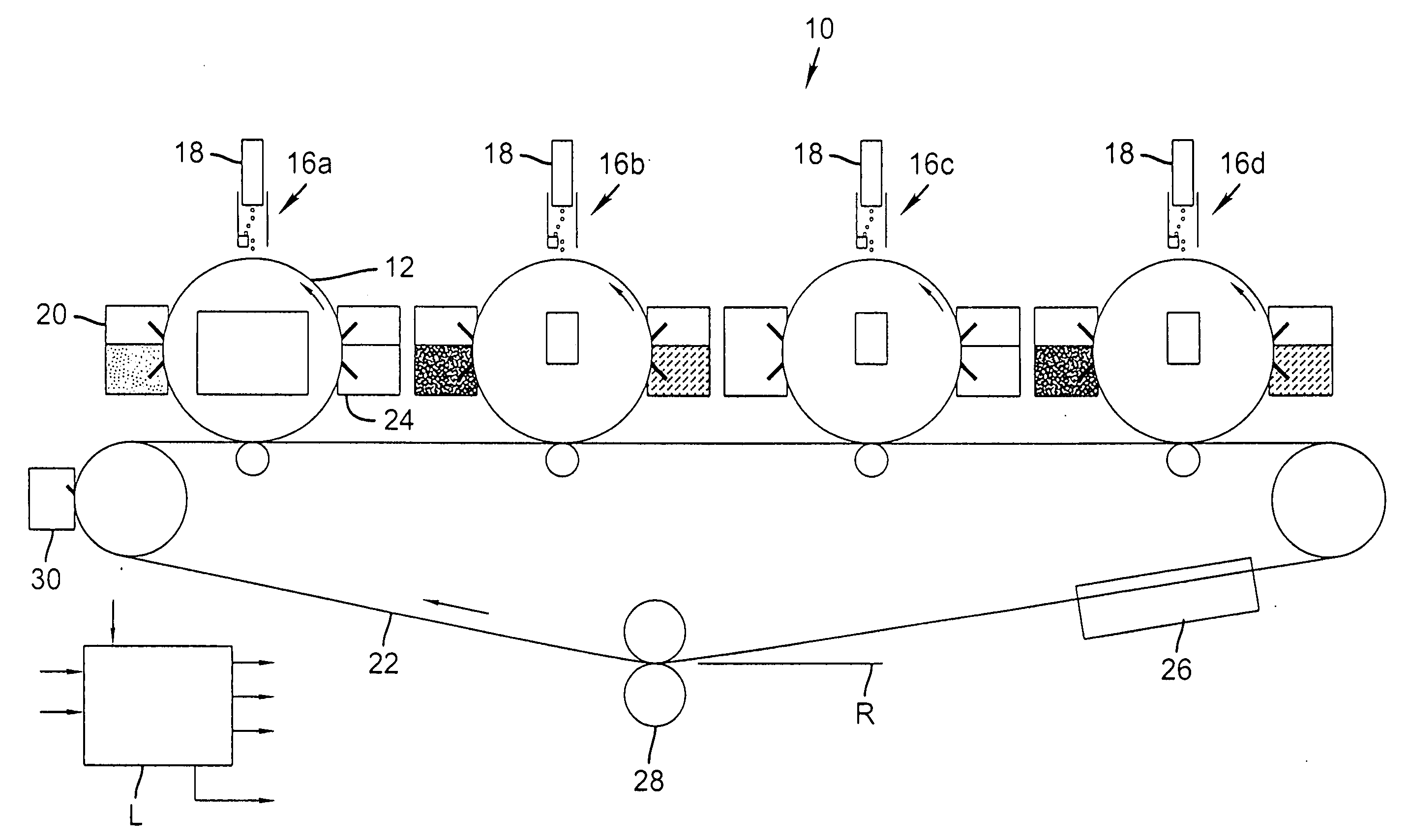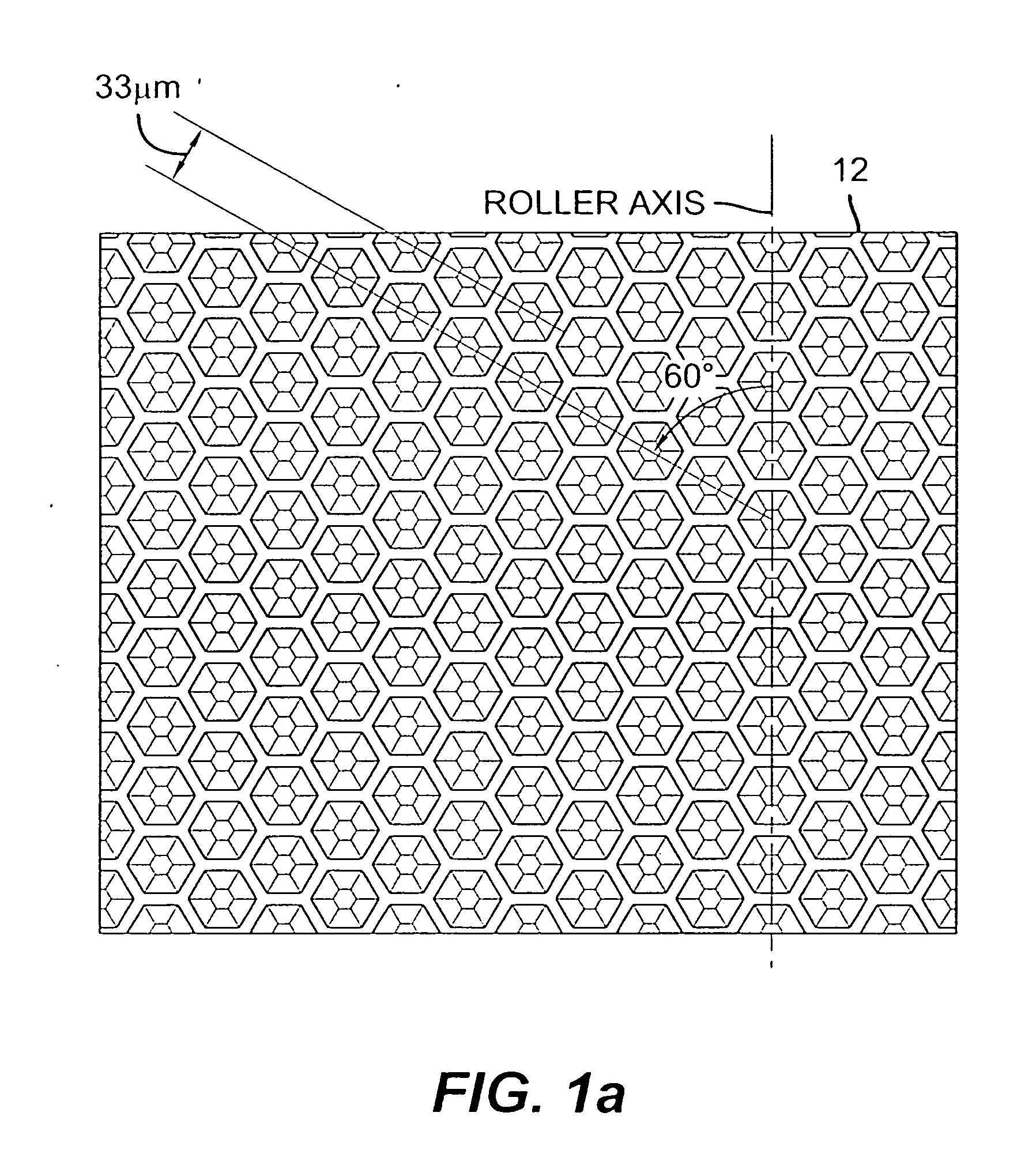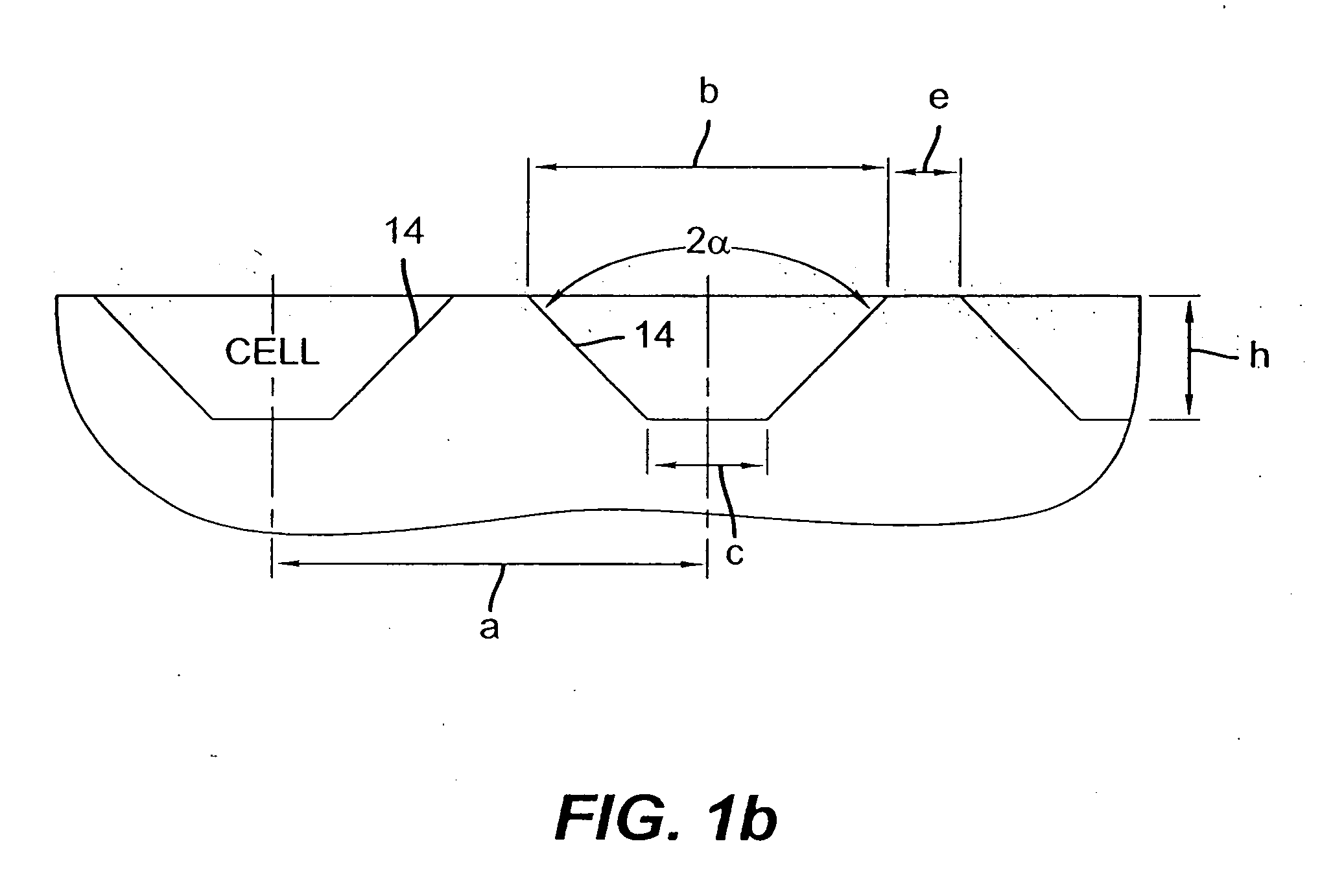Ink jet printing using a combination of non-marking and marking inks
a technology non-marking ink, which is applied in the field of ink jet printing, can solve the problems of limiting the paper that can be used, affecting and affecting the reliability of the digital printing engine, so as to achieve the effect of reducing the drying of the ink in the ink jet head and ensuring the quality of the paper
- Summary
- Abstract
- Description
- Claims
- Application Information
AI Technical Summary
Benefits of technology
Problems solved by technology
Method used
Image
Examples
Embodiment Construction
[0029]According to this invention, an ink jet mechanism is utilized to write an image, using a non-pigmented ink that is jetted into cells of a primary textured imaging member (TIM). The quantity of non-marking ink jetted into each cell varies, according to the negative image density of the image to be produced. Subsequent to the negative image-wise deposition of the non-marking ink, a marking ink of a chosen color is spread across the primary imaging member in such a manner as to fill the partially filled or unfilled cells of the TIM, thereby making a positive inked image. The preferred mode of filling the cells of the TIM with marking ink is to spread the ink using a roller, doctor blade, squeegee, or other known mechanism that is in intimate contact with the TIM, thereby forcing the marking ink into the partially filled or unfilled cells and skiving the ink off the TIM in all other areas.
[0030]In similar fashion, this technology can be used to produce digital binary images, i.e. ...
PUM
 Login to View More
Login to View More Abstract
Description
Claims
Application Information
 Login to View More
Login to View More - R&D
- Intellectual Property
- Life Sciences
- Materials
- Tech Scout
- Unparalleled Data Quality
- Higher Quality Content
- 60% Fewer Hallucinations
Browse by: Latest US Patents, China's latest patents, Technical Efficacy Thesaurus, Application Domain, Technology Topic, Popular Technical Reports.
© 2025 PatSnap. All rights reserved.Legal|Privacy policy|Modern Slavery Act Transparency Statement|Sitemap|About US| Contact US: help@patsnap.com



